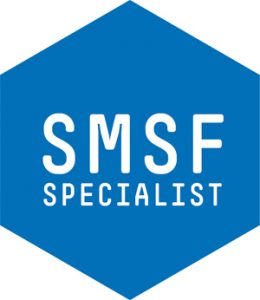A specialist auditor has explained some of the grey areas and confusing aspects of electronic signatures and SMSF documents.

.
Speaking in a recent webinar, ASF Audits head of education Shelley Banton explained there is a lot of misinformation surrounding when e-signatures can and can’t be used in relation to SMSF documents.
The current law that applies to e-signatures is the Electronic Transactions Act 1999 (ETA), said Ms Banton, which ensures that a transaction signed under Commonwealth law will not be invalid because it was conducted through electronic communication.
“The ETA applies to all Commonwealth Laws unless they’re specifically exempted by the Electronic Transactions Regulations 2000 (ETR) under schedule 1. Both the SIS and Corporations Act are exempted under the ETR,” she said.
“This means that all of those documents associated with the SIS and Corporations Act may still require wet signatures. So what we need to do here is dig deeper to work out whether a document can be electronically signed or not.”
Ms Banton noted that Treasury is currently reviewing section 127 of the Corporations Act which will allow all documents including SMSF documents to be signed electronically.
While a bill was previously introduced into Parliament last year, it lapsed when the Federal Election was called, she said.
“So watch this space but I don’t think we’re going to see any action here anytime soon,” she noted.
Financial statements
Ms Banton said most of the SMSF industry has been getting financial statements signed electronically since at least 2014.
“The reality is that it was never actually allowed under the ETA because as we know, the SIS legislation is exempt under the ETR. We have section 35B which says that the accounts of a fund must be prepared and signed and retained for a period of a five years,” she stated.
“So technically, financials could never be electronically signed. Luckily the ATO picked this up during Covid and updated the ETR in July 2020 to specially carve out section 35B of SIS which are now exempted under the ETR.”
This means the industry is now in a much better position as all financials electronically signed will comply regardless of whether they were signed previously or now, explained Ms Banton.
SIS laws exempted from the ETA 1999
Ms Banton said it’s important to be aware that there are a wide range of laws under SIS which are exempted from the ETA and not covered by the ETR 2020.
Most of these regulations are concerned with record retention but there is also a wide range of documents which must be signed with a wet signature she explained.
“The first one is an in-house asset written plan. [There is also] trustee declarations, trustee consents and also the storage decision for a collectable and personal use asset which is interesting,” she said.
“The other one is an investment strategy. While we don’t have to write an investment strategy under regulation 4.09 we can’t audit memory so they ATO stipulate that it must be written down.”
Ms Banton said this has left the SMSF industry with a dichotomy in regard to investment strategies.
“SIS says that the investment strategy doesn’t have to be written down but we know it does. There’s an exemption in place for the SIS laws which means it’s a little bit unclear as to whether the investment strategy can be signed electronically or not,” she said.
“Having said that, when we see them at audit we do tend to accept them because it is a bit of a grey area.”
Permanent SMSF documents that can and can’t be signed electronically
Trust deed establishments and upgrades
Electronic signatures for trust deeds were introduced as a temporary merger during COVID-19 which became permanent following the passage of the Corporations Amendment (Meetings and Documents) Bill 2021, which received royal assent on 22 February 2022, said Ms Banton.
“So the establishment deed can be signed electronically. However, the witnessing requirements are set down state by state which means that while the deed may be signed electronically, it may not be able to be fully executed by electronic signature if the state or territory requires a wet signature to witness it,” she cautioned.
“If there’s a trust deed upgrade or a change to the constitution, that’s allowed under s127(1) of the Corporations Act, which means a document can be signed either electronically or by a wet signature because it doesn’t need to be witnessed.”
Member applications and trustee minutes
Ms Banton said while member applications and trustee minutes do fall under the technology neutral reforms, it is important to review the trust deed to see what the rules are.
The trust deed will set out the procedures for signing which the trustees need to comply with, she noted.
“So, it’s possible that these documents may require a wet signature, you just have to read the deed,” she advised.
“I would assume that in most cases, especially for recent deeds, there’s going to be no requirement for a wet signature and they can be electronically signed.”
Consent to act as a trustee and ATO trustee declaration
A consent to act as a trustee and an ATO trustee declaration are both a “hard no” when it comes to electronic signatures, warned Ms Banton.
“A consent to act as a trustee is exempted under SIS so it requires a wet signature. As does section 201.D of the Corporations Act,” she said.
“Similarly you’ve got section 104A of the SIS which is the signing of the ATO trustee declaration which can’t be signed electronically at this point in time.”
What this means is that while these two documents may have been prepared correctly if an electronic signature was used, they haven’t been properly executed, she warned.
“This could be a potential limitation issue if the fund was ever in front of a court of law,” she stated.
“So from a practice point of view, you might want to consider how you’re getting your clients to sign these particular documents and review your proof procedures if they’re being signed electronically.”
By Legal
06 January 2023
smsfadviser.com























